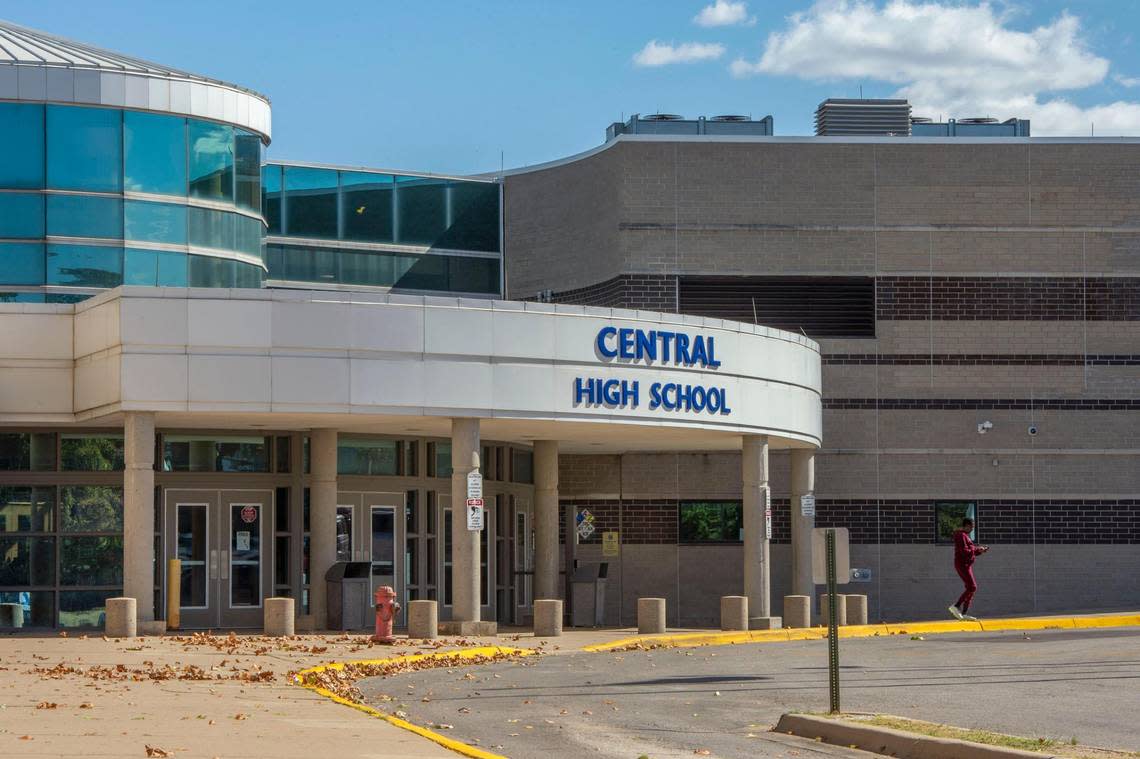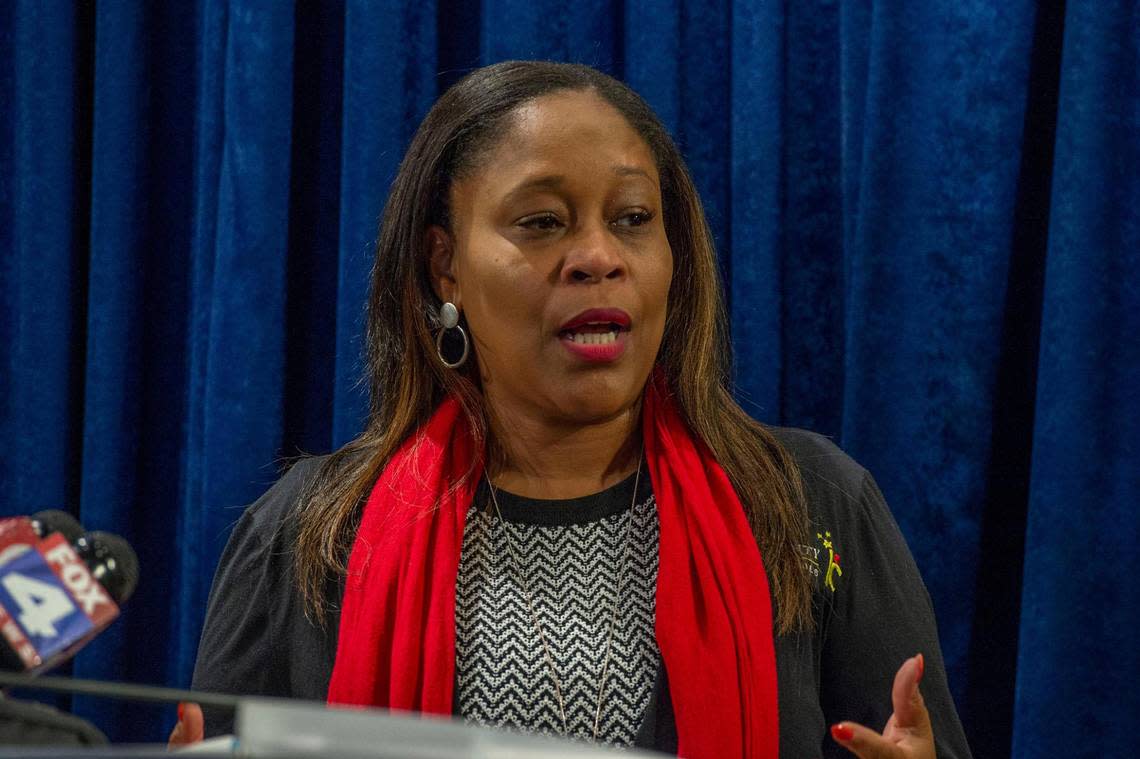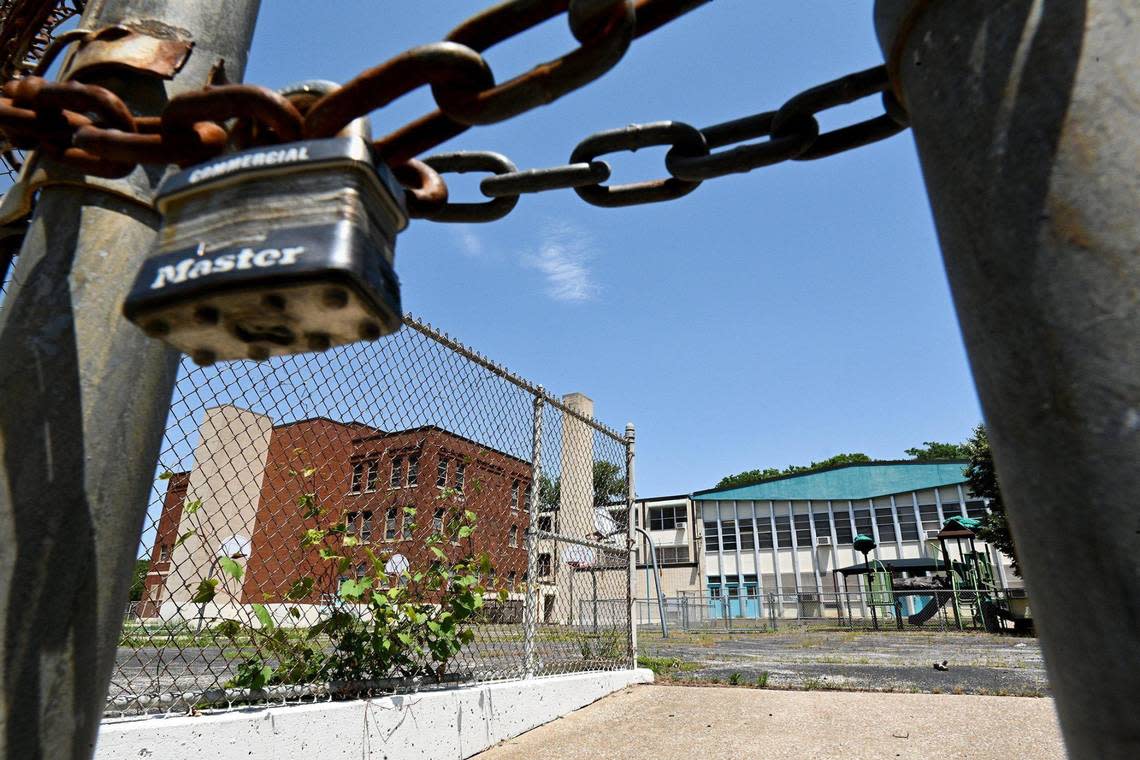These 10 Kansas City schools could close under new recommendation. ‘We want to thrive’
Ten Kansas City schools could close — including four that would be converted for new district use — under an ambitious proposal unveiled Wednesday to overhaul the school system, expand programs and improve district offerings across all schools.
Kansas City Public Schools leaders presented recommendations for the district’s long-term restructuring plan, Blueprint 2030, aimed at modernizing classrooms and ensuring all students have access to the same academic and extracurricular offerings. The district is evaluating closing and consolidating schools with low enrollment over the next several years so that it can free up money to make those improvements.
Consultants on Wednesday recommended that two high schools and eight elementary schools be closed or converted for new district use. The schools, they said, were chosen based on enrollment trends, building condition, maintenance costs and location.
Perhaps most notable, Central High School, with roughly 470 students, could close as early as next fall under the proposal. The site could possibly be transformed into a professional learning center for the district. Central students could transition to Southeast High School, less than five miles away, a point that caused several community members to groan during Wednesday’s school board meeting.

In addition to Central, James, Longfellow and Troost elementary schools could close as early as next fall.
Interim Superintendent Jennifer Collier emphasized that the district will work with families on transitioning to new schools, to overcome cultural differences and other factors.
In the 2024-25 school year, the district could close King, Wheatley and Whittier elementary schools. The current King elementary could become the site of a new Paseo Middle School. And plans include building a new King elementary. A new South Middle School also is expected to open that year.
In the 2026-27 school year, the district could close Northeast High School and Faxon and Melcher elementary schools. Northeast would likely be renovated for future district use, and students would be transitioned to East and Southeast high schools. Faxon also would be used by the district in the future, possibly as a parent empowerment center. Students from both elementary schools would transition to the new King elementary.
The proposal also includes bold plans for expanding district offerings and improving student achievement. The district could, for example, expand foreign language and instrumental music programs, implement more career-readiness and project-based learning opportunities, plus add updated science labs and spaces for student collaboration.
KCPS for months has held community meetings to gather parent, student and staff input on different scenarios for restructuring.
The district will hold engagement sessions and ask for community input this fall before making any decisions.
“We know a lot of focus has been on the facilities component of Blueprint 2030,” Collier said. “But the primary focus and goal around Blueprint 2030 is really around academic achievement and enhancing our student experience.”

The need for change
After decades of enrollment decline, KCPS is operating more schools than districts with a similar number of students, officials have said. And it spends a higher percentage of its budget on operational costs — such as transportation, food services and security — than neighboring districts do.
In under-enrolled and outdated school buildings, students are often missing out on having full-time music or art teachers, extracurriculars or even a football team, for example. By consolidating schools, the district aims to redirect funds to update buildings, increase offerings and raise student achievement.
That work will rely partly on the district getting a bond initiative passed, a sticking point among some board members on Wednesday, since the district is only in the early stages of planning for such a proposal. Voters have not passed a district bond proposal since 1967, unlike neighboring districts — many of which have bond elections every several years to fund projects.
Collier said that under the plan, the district would retain all staff and teachers, potentially reducing class sizes.
KCPS is hoping to gain community support for whatever plan it approves. And officials aim to build on its momentum since it regained full state accreditation in January for the first time in two decades. In recent years, the district improved academic performance and graduation rates to attain the once elusive goal.
Leaders hope the long-term restructuring plan will help to continue improving academic achievement, plus attract and retain more families in the school system.
“We’ve got to decide that we’re going to be a different KCPS, a different city. That we’re going to put kids first, not just say that we put kids first. Set our agendas down,” Collier said. “…We are at a critical point. We’re going to do this and maintain our accreditation, but not just maintain it, we want to thrive. And the truth is we need the support of the community. We cannot do this work by ourselves.”
Proposed academic changes include expanding curriculum, implementing project-based learning opportunities and offering more field trips.
“I’ve been a parent in this district for six years,” board member Marvia Jones said. “With my two kids, there’s never been a year gone by that both of them have gone on a field trip. They have not had access to instruments for everyone in the schools, definitely not languages at any of the schools, hands-on activities, they have not really had those. Chess clubs, debate clubs, things that you might find in some of our surrounding districts.
“I understand the concern. The community is definitely going to be impacted by these changes. This is emotional, not just a physical change.”
At the elementary level, schools would add science labs, world language classrooms and instrumental music. Elementary schools would also see an expansion of science and arts programs, with a dedicated space for robotics, virtual reality or other programs.
Secondary schools would also see music and arts improvements, with leaders ensuring all high schools once again have marching bands. World language programs would be expanded. And students would be provided with a four-year study course, helping them choose from different career and college preparedness paths.
The district also plans to update classrooms, create spaces for student collaboration, modernize science labs, improve technology and eliminate Wi-Fi dead zones.
Some of those changes already are in the works, officials said, with pilot programs taking place this year, including expanding fine arts and world language courses, adding art therapy programs and more. Collier said that math and reading interventionist staff also has been added this fall.

How did KCPS get here?
For years, leaders have been seeking to restructure the school system that they say has grown increasingly fragmented.
KCPS, a district deeply embedded in Kansas City’s history of redlining and white flight, has seen families leave for suburban districts for years. And over the past couple of decades as charter schools grew, KCPS enrollment fell by half. Now at roughly 14,000 students, enrollment has leveled off more in recent years.
Failing to meet state performance standards, and with dwindling enrollment and a revolving door of leaders, the district lost full state accreditation in 2000.
In recent years, district enrollment has become more diverse, with an influx of Latino students, as well as English language learners. But Kansas City schools are now more segregated than they were in the 1990s, a 2019 system analysis of KCPS and charters found. Roughly 10% of public school students in Kansas City are white; 47% of those white students attend one of seven schools.
About half of Kansas City students now attend a charter school. In 2019, more middle schoolers attended charter schools in the city than KCPS schools, for example. Charters first took root in Missouri in the late ’90s, promising a path for schools to operate with freedom from traditional district regulations while still receiving public dollars and providing a tuition-free education.
But charters haven’t opened in the neighborhoods needing better schools, according to the Urban League of Greater Kansas City’s 2019 report on “The State of Black Kansas City.”
The report states that there are more charter schools in middle-income neighborhoods. The district analysis found that central and southwest regions of Kansas City had thousands more classroom seats available than students. And there were not enough seats available for students in the north, east and southeast attendance zones. School achievement, especially in the southeast, has lagged behind schools in more middle-class areas.
As enrollment dropped, a decade ago, KCPS underwent a historic “right-sizing” plan that closed almost half of its schools. Former superintendent Mark Bedell said in a previous interview that during the previous closures, “there were areas in the community where we left holes. And that allowed for charter schools to flourish.”
In 2019, 68% of students did not attend their home neighborhood school. Families in southwestern Kansas City were more likely to send their children to the school of their choice than those in the eastern part of the city. But only 48% of students left their neighborhood school for a higher achieving school, according to KCPS.
Meanwhile, many Missouri lawmakers have been pushing for an expansion of school choice, such as funding private school scholarships for public school students.
KCPS deals with a high mobility rate among families, serving 47% fewer high school seniors than kindergartners. Leaders have argued that families have a hard time navigating the system because of unclear school feeder patterns. And when students don’t stick with the same school, it is harder to help them achieve, officials say.
The district for years struggled to meet state standards and retain leaders. But it began to improve academic achievement scores, graduation rates and other metrics under Bedell’s steady leadership. In January, the Missouri state school board announced that the district had regained full accreditation.
Bedell, who worked at the helm for six years, served the longest of any KCPS superintendent in 50 years. He resigned this summer to serve as superintendent of Anne Arundel County Public Schools, based in Annapolis, Maryland. Collier has stepped up as interim superintendent. And the district is conducting a search for its next leader.
While celebrating regaining accreditation, Bedell in January emphasized that the goal was met in a district “with 100% (of students on) free and reduced lunch. One of the highest mobilities, not just in the state, but in the country. One of the highest (English language learner) populations in the state, if not the highest. … One of the highest special education populations in the state of Missouri.”
The result of KCPS’ history, officials say, is a system today that is cluttered with too many under-enrolled schools, making it increasingly difficult to equitably serve all students and offer the same programs and resources across buildings.
KCPS is asking for community buy-in to help continue building on its recent successes. Leaders hope that by restructuring the system, they will be able to better support each student — but they have acknowledged that the process will be an emotional one as families are poised to say goodbye to more memory-filled schools.
